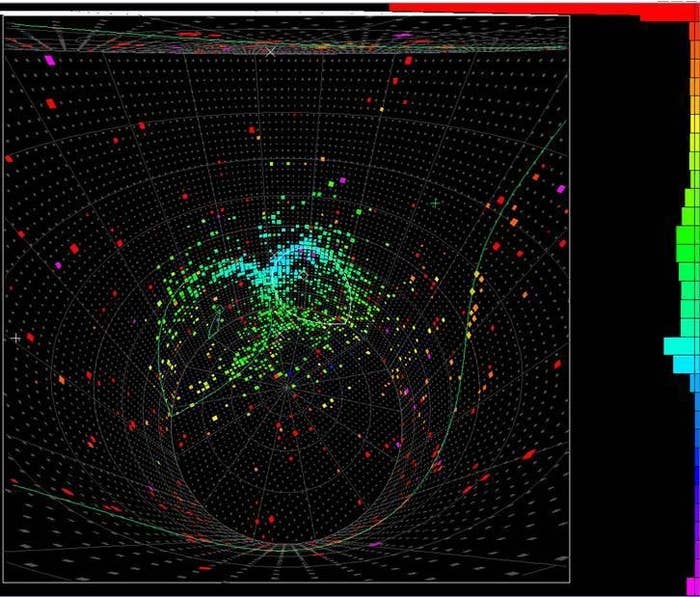
The secrets of elusive neutrinos garnered a Canadian and a Japanese scientist the Nobel Prize in physics Tuesday.
The Royal Swedish Academy of Sciences awarded the nearly $1 million prize to Arthur McDonald of the Sudbury Neutrino Observatory Institute in Canada and Takaaki Kajita of the University of Tokyo. They will split the prize.
The pair discovered that these tiny subatomic particles, created by nuclear reactions in the sun, change their identities as they travel through space, and that they have mass. Both discoveries surprised physicists, who are using the findings to explore the physics of the sun and look for other unexpected behavior among subatomic particles.

"The discovery that neutrinos have mass has profound consequences," said physicist Olga Botner of the Royal Swedish Academy of Sciences. Standard particle physics theory, which very accurately explains nuclear and electromagnetic forces, can't account for the mass of these particles.
A rush has started on the massive underground water chambers used to detect neutrinos as they pass at the speed of light through the Earth. Although neutrinos are the most common particle in the universe, they very rarely interact with other particles, leaving these underground detectors to very patiently wait for rare flashes of light from a neutrino striking a water molecule. Physicists analyze the residue of these rare collisions for hints of what flavor of neutrino passed by.
The Nobel prize recognizes the hunt for the tiny particles as a new frontier in physics.
"It's a very daunting experience, needless to say," McDonald said by phone at a Nobel Prize news conference. "Fortunately I have many colleagues as well who share this prize with me."
View this video on YouTube
Arthur McDonald explains neutrinos in 2010 lecture.
"This Nobel Prize really isn't a surprise, these two experiments really put neutrinos front and center as the big questions of physics" physicist Joe Lykken, deputy director of the Fermi National Accelerator Laboratory outside Batavia, Illinois, told BuzzFeed News.
First predicted to exist by physicists in the 1930s, neutrinos are essentially shrapnel from nuclear reactions, born in collisions between cosmic rays and the upper atmosphere or fusion in the sun's core. Electrically neutral and thought to lack any mass, neutrinos left physicists for decades hard pressed to think of any way to detect the ghostly subatomic particles, an achievement that only came in the 1950s.
In 1998, Kajita's Super-Kamiokande facilty produced evidence that "missing" neutrinos expected to be seen coming from the upper atmosphere had actually changed their identities, changing from one "flavor" of neutrino to another (there are three known flavors of neutrinos).
In 2001, McDonald's Sudbury detector showed that missing ones from the sun were similarly changing their flavors. These metamorphoses can only happen if neutrinos have mass, upending decades of theory.
"There was a eureka moment," McDonald said at the news conference, when his physics team realized they had cracked the mystery of the missing solar neutrinos.
Physicists now suspect that all the regular matter in the universe derived from neutrinos created after its origin about 13.8 billion years ago in the Big Bang, Lykken said. His lab now shoots beams of neutrinos at detectors in Minnesota instead of waiting for the sun to deliver them.
"We're starting to win the war on detecting neutrinos but it's a very hard problem," Lykken said.
McDonald and Kajita will receive their awards on Dec. 10, the anniversary of prize founder Alfred Nobel's 1896 death, from King Carl Gustav XVI of Sweden.

